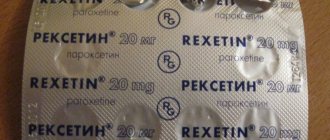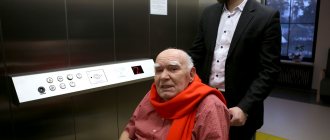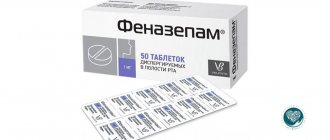Phenylpiracetam (or phenylpiracetam), known under the trade name Phenotropil, is a Russian drug belonging to the group of nootropics. It has a psychostimulating effect, affects memory, ability to concentrate, performance, and also reduces irritability and emotional excitability.
Until recently, many used it as a miracle pill for the brain. For example, when a lot of things have piled up in a short period of time. Or when the deadline is close and there is still too much work to do. Phenotropil also has many fans among students, especially during the session.
But now it is impossible to find Phenotropil in pharmacies - the manufacturer, Valenta Pharm, has stopped its production due to the termination of the agreement with the owners of the patent for the active substance. If you can find remnants somewhere else, it’s only from the last series, back in 2017.
In this regard, many people have a question - what to replace Phenotropil with? It would be logical to turn to drugs of the same pharmacological group - nootropics and psychostimulants.
Phenotropil: analogues
05.11.2019 18:23
Fig 1. - Phenotropil USA from the manufacturer SNS Smart Powders
Author: Neurologist Oleg Olegovich Torsky
Phenotropil is considered to be the most popular drug from the group of nootropics, developed by leading pharmaceutical workers. Due to its main active components, the process of blood supply to the brain improves, and the level of concentration and thinking also increases.
The drug Phenotropil is prescribed to people experiencing strong emotional stress, the consequences of which are fatigue, drowsiness, and mental stress.
pharmachologic effect
Manufacturer: JSC VALENTA PHARMACEUTIKA (Russia)
Release form: tablets
Active ingredient: phenotropil
Analogs: Phenibut, Nootropil, Piracetam
Phenotropil is a medicine that stimulates metabolic processes and blood circulation in the brain. Under the influence of the drug, memory improves, concentration increases, and the learning process is facilitated.
The drug increases the resistance of brain tissue to oxygen starvation and the effects of toxic substances, reduces the threshold of central nervous system excitability and increases resistance to stress.
What to replace it with?
Unfortunately, the nootropic drug Carphedon (phenotropil) has not been produced since 2017. As a result, the question arose among consumers about whether there was a replacement for it. This is due to the fact that many people who have been using this drug for a long period of time have already decided on the required dosage, course of treatment, and breaks. That is why it will be quite difficult for them to get used to another drug, which is a derivative of phenylpiracetam.
Among the analogues of Phenylpiracetam, the following should be highlighted:
- "Braviton" is available exclusively by prescription in the form of tablets. Helps improve blood circulation, reduce platelet aggregation, provide reliable brain protection during hypoxia;
- Vinpocetine improves memory and increases concentration. Indications for use include: traumatic brain injury, encephalopathy, senile dementia;
- "Escotropil" - produced on the basis of piracetam, is aimed at stimulating cognitive processes. The effect on the central nervous system is to change the speed of impulses to the brain, stimulating the metabolic process of nerve cells.
Such drugs belong to the group of psychostimulant drugs. By the way, many people are misled by such names as Phenylpiracetam, Carphedon. It is worth noting that these are just synonyms for modified piracetam.
Pubmed
All information in the article is based on scientific medical materials.
PMID (from the English PubMed Identifier, PubMed ID) is a unique identification number assigned to each publication, description, abstract, or full text of which is stored in the PubMed database.
PubMed is an English-language text database of medical and biological publications created by the US National Center for Biotechnology Information (NCBI) based on the biotechnology section of the US National Library of Medicine (NLM). A key component of PubMed is MEDLINE. It was first introduced in January 1996. Available through NCBI-Entrez[en], a central search engine including PubMed, PubChem and other major medical databases. Contains approximately 25 million citations.
By composition and action
Phenotropil is a drug classified as a mental stimulant. It is worth noting that due to its pronounced stimulating effect, the drug is prohibited for use among athletes before upcoming competitions, since it is considered a type of doping. The main component is the active substance of the same name in an amount of 100 milligrams, which acts as a new generation stimulant, the main task of which is to increase brain activity. In addition to nootropic, it also has the following types of effects:
- anti-anxiety;
- antiamnestic;
- antiepileptic;
- antiasthenic;
- neuromodulatory.
However, the most pronounced effect of Phenotropil is considered to be an improvement in the quality of memory, the learning process, and concentration. By regulating biological rhythms in the brain, increasing the content of aminobutyric acid, dopamine, norepinephrine, and serotonin, the drug helps optimize well-being and improve mood. It is worth noting that the release of the drug ceased in 2021, people are looking for its analogues.
Among the wide variety of nootropic agents that have the same composition as Phenotropil, the following should be highlighted:
- "Entrop";
- "Nootropil" (infusion solution);
- "Slim Stories Prof."
- "Kombitropil";
- "Phenylpiracetam";
- "NooCam."
As for the action, it is worth noting the following analogues of Phenylpiracetam:
- "Ginkgo biloba";
- "Korsavin Forte";
- "Cavinton solution";
- "Picamilon";
- "Aminalon";
- "Glycine";
- "Phenibut";
- "Bilobil Forte";
- "Ginkum".
Cost of medicines
Prices for similar Phenotropil preparations depend on the country of their manufacture. Foreign generics may cost even more, but domestic analogues are 2-3 times cheaper than the original. Do not forget that nootropic medications are not intended for self-medication, and only a doctor knows what to replace Phenotropil with.
| Name | Dosage of the main active component (mg) | Quantity in 1 package | Price |
| Fenotropil | 100 | 30 | 1030-1080 |
| Entrop | 100 | 10 | 1803-1810 |
| Phenylpiracetam | 100 | 30 | 1134-1150 |
| Slim Story Prof. | 100 | 10 | 642-648 |
| Combitropil | 400 | 30 | 90-110 |
| Ginkgo biloba | 500 | 40 80 | 114-120 204-230 |
| Korsavin Forte | 10 | 10 | 110-130 |
| Cavinton solution | 10 10 | 20 10/2 ml | 1226-1251 1310-1328 |
| Picamilon | 100 | 10 ampoules | 192-212 |
| Cortexin | 10 | 10 | 1624-1672 |
| Aminalon | 250 | 50 | 157-170 |
| Lutsetam | 400 800 | 60 30 | 440-501 560-590 |
| Nootropil solution | 1200 20% | 20 12 ampoules/5 ml | 520-551 729-739 |
| Piracetam | 800 1200 | 30 20 | 381-400 583-600 |
| NooKam | 400 | 20 | 343-387 |
| Glycine | 100 300 | 50 20 | 180-202 170-193 |
| Phenibut | 250 | 20 | 971-987 |
| Bilobil Forte | 80 | 20 60 | 859-900 2160-2200 |
| Ginkum | 40 | 60 | 578-600 |
According to active substance
It is worth noting that the main active ingredient of the medicinal nootropic drug is Phenotropil. Among the main analogues of the drug, which have similar components in their composition, the following should be highlighted:
- "Vinpotsetin";
- Acefen;
- "Kavinton"
- "Lutsetam";
- "Vinpotropil";
- "Pirates"
- "Tserakson."
The attending physician, when choosing a phenotropil substitute, must take into account not only the pharmaceutical properties, active substance, indications and contraindications, but also the general health of the patient. The tendency to an allergic reaction, side effects, etc. is also taken into account.
Phenylpiracetam
Manufacturer: OFHK (Russia)
Release form: tablets
Active ingredient: phenylpiracetam
Phenylpiracetam is a nootropic with a pronounced effect on restoring partially lost mnestic functions of the brain (memory, attention, learning ability). The drug improves mood, increases performance and resistance to stress.
During drug treatment, vision and blood supply to the lower extremities improve. The therapeutic effect is noticeable after just a few doses of the medication.
For memory and performance
Phenotropil is famous for the fact that it has a positive effect on brain cells, thereby stimulating its blood supply. This, in turn, increases concentration, improves memory and significantly increases performance.
Since the drug was discontinued back in 2021, people are constantly looking for suitable substitutes. Among the most popular phenotropil analogues, it is worth noting the following:
- "Nootropil"
- "Biotredin";
- "Calcium hopantenate";
- "Neurobutal";
- "Glycine" and others.
All of the above phenylpiracetam analogues act as the best nootropic mental simulators. They are taken to optimize the processes of blood supply to the brain, improve cognitive functions, that is, for vigor and energy. After a person has taken a specific dose of Phenotropil, his endurance increases under strong emotional stress, tension, and frequent mood swings.
Experience of using Phenotropil in clinical practice
Pharmacokinetics were studied in rats using different routes of drug administration (intravenously, intramuscularly and orally at a dose of 100 mg/kg) [1]. It has been proven that Phenotropil is quickly absorbed from the gastrointestinal tract and easily passes through the blood-brain barrier, which may be due to its lipophilicity and the lack of pronounced acid-base properties. Moreover, absorption occurs much faster with oral administration, which is also confirmed by the time to reach the maximum concentration of the drug in the blood (with oral administration - 0.84 hours, and with intramuscular administration - 1.46 hours). The degree of absolute bioavailability of Phenotropil with extravascular routes of administration is approximately 100%. Phenotropil is eliminated relatively slowly from the body of rats (T1/2 is 3–5 hours, while for piracetam this value is 1.8 hours), and is completely eliminated within 3 days (but 94% of the drug is eliminated in the first 24 hours). Phenotropil is not metabolized in the body and is excreted unchanged (unlike piracetam, only 40% by the kidneys and 60% by bile and sweat) [2]. Based on the results of studying the acute toxicity of Phenotropil in mice and calculating the LD50 of the drug, a conclusion was made about its fairly wide therapeutic range and low toxicity. The therapeutic index was 32 units. In addition, Phenotropil does not have embryotoxicity, mutagenic or carcinogenic properties. In animal experiments, it reduces the growth of spontaneous malignant tumors. Phenotropil does not cause addiction, dependence or withdrawal symptoms [3,4]. Phenotropil is superior to other nootropics, and in particular piracetam, in terms of the spectrum of nootropic effects and activity. In addition to the pronounced antiamnestic effect, Phenotropil has psychostimulating, antihypoxic, anxiolytic, anticonvulsant, analgesic, antidepressant, vegetostabilizing, vasoactive effects. The mechanisms for realizing the effects of Phenotropil are close to natural, and the effect of this drug is predominantly neurometabolite. Also, Phenotropil, like other pyrrolidone nootropics, affects the main synaptic systems - cholinergic, adrenergic, dopaminergic, GABAergic and glutamatergic in such a way that it has a positive effect on memory and the body’s adaptation to extreme influences. Let us consider the main effects of Phenotropil in more detail, using illustrative experimental examples. The antiamnestic effects of Phenotropil were studied in rats using the method of conditioned passive avoidance reflex (CPAR) in a special installation. Amnesia (extinction of CPAR) was induced by maximum electric shock (MESH) [6]. Phenotropil in a wide range of doses (from 12.5 to 600 mg/kg) completely restored memory impaired by MES. In addition, rats treated with Phenotropil were superior to control animals in reproducing CPAR. The antiamnesic effect of Phenotropil increased with increasing dose, and was also significantly superior to piracetam. Thus, piracetam had an antiamnestic effect at a dose of at least 300 mg/kg, and Phenotropil - 12.5 mg/kg. Thus, Phenotropil turned out to be 25 times more active than piracetam. The effectiveness of Phenotropil is similar for other types of amnesia, for example, after the administration of scopolamine. The antihypoxic effect of Phenotropil was studied in a comparative study with piracetam in mice (in hypobaric and normobaric models of hypoxia). The protective effect of the drugs was assessed by the life expectancy of the animals. Phenotropil significantly increased the lifespan of mice in a pressure chamber already at a dose of 100 mg/kg, and piracetam only at a dose of 2000 mg/kg. With an increase in the dose of Phenotropil to 300 mg/kg, life expectancy increased 10 times compared to the control, and after the administration of piracetam at a dose of 2000 mg/kg - only 2 times. The anticonvulsant effects of Phenotropil and piracetam were compared in experiments on mice using bicuculline, corazole or MES to induce seizures. Clonic, tonic and clonic–tonic convulsions and mortality were recorded. In an experiment with bicuculline, Phenotropil in doses of 100 and 300 mg/kg completely blocked its convulsive effect and prevented the death of animals in 100% of cases. In contrast, piracetam at doses of 300 and 600 mg/kg did not block the convulsive effect of bicuculline. In addition, experiments have shown that Phenotropil increases spontaneous motor activity by increasing the frequency of horizontal and vertical movements, which indicates its psychostimulating effect. Phenotropil also weakens the narcotic effect of ethanol, that is, it has a pronounced awakening effect and the ability to weaken the toxic effect of ethanol. The combination of the antihypoxic and ergotropic (activation of energy metabolism in brain cells) action of Phenotropil with neuro- and psychotropic effects allows us to classify it as a drug of multimodal action, which significantly expands the scope of its application and makes it possible to use it both as a means of drug therapy in the event of functional disorders and diseases, and for the purpose of pharmacological correction of fatigue [4,5]. Thus, we can talk not just about the stress-protective, but about the adaptogenic effect of Phenotropil, proven in a study on 1050 male Wistar rats. In this work, a comparative assessment of the effect of drugs (diazepam, phenibut and its isomers, hopantenic acid, pyritinol, piracetam and Phenotropil) on indicators of the stress reaction of animals in three models of experimental stress, which received the conventional names “painful”, “emotiogenic” and “antiorthostatic”, was carried out. " According to the results of the work, Phenotropil has a pronounced adaptogenic effect, unlike tranquilizers, not suppressing the body's response to stress ("passive protection"), but regulating the adequacy of the response to the strength of the stimulus, thereby increasing the animals' resistance to stress and their adaptive capabilities. Thus, the wide range of pharmacological activity and mechanism of action of Phenotropil served as the basis for its successful clinical use. Phenotropil is indicated for use both in healthy individuals and in people with various diseases of the central nervous system: for memory disorders of various origins (aging, early stages of dementia, hypoxia, stress, intoxication, fatigue, sleep disorders); in children with hyperactivity disorder with attention impairment; in acute, subacute, early and late recovery periods of ischemic strokes; with discirculatory encephalopathy and vegetative-vascular dystonia, in the acute period of traumatic brain injury (TBI) and its consequences, with asthenia of various origins, convulsive states, dizziness, neuroses and neurosis-like states, depression and alcoholism (to relieve withdrawal symptoms, sobering effect). In healthy people, Phenotropil is used to increase mental and physical activity, as well as the body's resistance to extreme influences. Thus, in a group of practically healthy men who received a single dose of Phenotropil at a dose of 100 mg, 200 mg or placebo before starting their usual training sessions, an assessment of mental (using four computerized tests) and physical performance (using bicycle ergometry - PWC-170 test) was carried out. ). According to the results, in the Phenotropil group, compared with the background, an increase in the group average values of mental indicators (for example, concentration and stability of attention, short-term memory) and physical performance (both absolute and relative) was revealed after an intense educational and training load. The severity of the effect on the dynamics of psychological and physiological parameters in practically healthy individuals was higher when taking 100 mg of Phenotropil per day than 200 mg per day [7]. For persons whose professional activities involve heavy mental and physical stress, the recommended dose of Phenotropil as a functional state corrector is also 100 mg once. This was proven in a study of 57 men working in stressful, extreme work conditions. A comprehensive assessment of the dynamics of the mental state was carried out while taking Phenotropil (50–500 mg/day) during a two-week course of treatment. Asthenoneurotic, asthenic and asthenodepressive syndromes were subject to the greatest reduction. The first clear signs were observed already on the 2nd day of therapy, and in extreme conditions of activity - 5-6 hours after a single oral dose. Phenotropil did not increase reaction time and improved coordination of movements. In addition, the drug had a favorable tolerability profile [8]. Also, clinical studies among aviation specialists have proven that Phenotropil accelerates the development of adaptation to hypoxia during a course of treatment [9]. And among athletes with great physical and psycho-emotional stress [10], a comparative placebo-controlled study of Phenotropil and mesocarb showed that the use of Phenotropil for three days maintained a high level of performance and consolidated the achieved results, significantly improved the quality of sleep while reducing its duration and significantly increased the reserves of the adrenal cortex, which indicates the stress-protective effect of the drug. Phenotropil occupies a very important place in the complex treatment of traumatic brain injury (TBI). TBI is a fairly common type of traumatic pathology, and it is most common in children and young people. Undoubtedly, proper treatment of patients is important both in the acute period and in subsequent stages. The most common consequence of TBI is chronic post-traumatic encephalopathy, the leading clinical syndromes of which are: psychoorganic, vegetative-dystonic, epileptic, astheno-neurotic, syndromes of liquorodynamic disorders and neurological deficit. Depression also often develops [11]. Against the background of astheno-neurotic syndrome, alcohol and drug addictions easily arise, and with increasing severity of depression, patients often tend to commit suicide. It is the consequences of TBI that significantly worsen the quality of life of patients, reduce performance and social activity, and lead to persistent disability. The effect of Phenotropil in patients with TBI has been studied in a number of clinical studies. According to the results of one of the studies [12], the administration of Phenotropil (at a dose of 100 mg per day, course - 1 month) to patients in the acute period of concussion led to a more rapid (already on the first day) and significant regression of asthenic and autonomic changes compared with standard nootropic therapy. Another study [11] studied the effectiveness of Phenotropil at a dose of 100 mg per day in the form of drug monotherapy among patients with long-term consequences of TBI with astheno-neurotic, astheno-depressive, hypochondriacal, behavioral disorders, as well as decreased adaptation. In the control group, patients received (in addition to standard non-drug therapy) piracetam in a daily dose of 0.8 g orally, restoratives, tranquilizers with sedative and muscle relaxant effects. According to the results of the work, in the main group it was possible to achieve a more significant improvement in impaired higher mental functions in a relatively short period of time. It was in the main group that the best indicators of memory, attention and intellectual capabilities were observed, the sleep-wake cycle was normalized, there was a significant decrease in affective disorders and the severity of pathological somato-vegetative manifestations, the anxiety component completely regressed, the mood level increased, diurnal mood swings and suicidal thoughts disappeared trends, lost social connections were restored. Also today there are encouraging results from the use of Phenotropil for the treatment of patients with both acute and chronic cerebrovascular disorders. In most countries of the world, acute cerebrovascular accidents (ACI) are among the four most common causes of death and one of the most common causes of disability. More than 450,000 new strokes are registered annually in Russia, and 70% of them are ischemic strokes (IS). To treat stroke, a set of measures is used to influence the main neurological consequences of stroke - motor, sensory, coordination, cognitive and other disorders [13–16]. Recently, in the pathogenesis of IS and its consequences, great importance has been attached to immune mechanisms [17–19], and therefore it is advisable to use not only nootropics, but also immunomodulators for stroke. It has been proven that Phenotropil, in addition to its nootropic properties, also has an immunostimulating effect. Work was carried out to determine the effectiveness and mechanism of action of Phenotropil at a dose of 100 mg in the morning for a month in 20 patients who underwent IS [17]. The patients underwent a complete general clinical, neurological and immunological examination and were divided into 2 groups. The first included 7 patients over 60 years of age with a pronounced neurological defect (with internal capsule syndrome, aphasic and emotional-volitional disorders), the second included 13 patients from 31 to 60 years old, whose neurological status included pyramidal syndrome and sleep disorders. Complete restoration of function or significant regression of neurological symptoms was observed in 40% of patients in the first and 85% of the second group, a decrease in the severity of neurological symptoms in 50 and 15%, respectively, and no positive dynamics in only 10% of the first group. In addition, there was a significant decrease in the titer of antibodies to myelin basic protein (an increase in the level of these antibodies is detected in the acute period of IS, which possibly indicates the process of demyelination and insufficient trophic provision of neurons). Another study examined the effectiveness of Phenotropil for the treatment of patients in the acute period of mild to moderate cerebral infarction [13]. 42 patients were included and divided into 2 groups, comparable by gender and age. The main group included 30 patients who were prescribed Phenotropil at a dose of 100 mg orally once a day for 30 days, the control group included 12 patients who received piracetam at a dose of 800 mg 2 times a day for 30 days. The study was conducted before the start of treatment, on the 10th and 30th days. Analysis of the dynamics of clinical manifestations in patients receiving Phenotropil in the acute period showed a clear positive effect of the drug on both general cerebral and focal neurological symptoms, and the positive effect was already on the 10th day and significantly higher than in patients in the control group. In addition to regression of neurological symptoms, patients showed improvement in neuropsychological and electrophysiological parameters. According to the results of the study, among 120 patients, the effectiveness of Phenotropil at a dose of 100 mg 1 time per day for 30 days was proven in the treatment of the early recovery period of IS in an outpatient setting [20]. Dyscirculatory encephalopathy (DE) or chronic forms of vascular diseases of the brain are an extremely common pathology today. DE is characterized by a progressive course, often accompanied by the development of strokes and transient ischemic attacks. Therefore, there is no doubt the need to use effective and safe methods of its treatment. Due to the prevalence of cognitive impairment, emotional disorders and focal neurological deficits in the clinical picture of DE, the use of drugs that have a complex effect (positive effect on both cerebral metabolism and the psycho-emotional sphere) is indicated. This is exactly the effect Phenotropil has. An open study was conducted to evaluate the effectiveness of Phenotropil (compared to piracetam, GABA and vinpocetine) in 147 elderly patients suffering from neurosis-like disorders of vascular origin (stage II DE) with a predominance of asthenic symptoms. According to the results of the work, Phenotropil had the most pronounced effect on asthenic disorders, which was confirmed by the dynamics of the index of reduction of asthenic symptoms, and was also accompanied by a change in the patients’ assessment of their condition during treatment, an increase in activity, an improvement in mood and general well-being. Depending on the nature and severity of mental disorders, the prescription regimen for Phenotropil varies from low doses (0.05–0.2 g/day) for astheno-neurotic disorders, to fairly long-term use of 0.1–0.5 g/day. in the case of asthenic-depressive manifestations [8]. A study was also performed on the study of the efficiency and tolerance of phenotropil, in which 51 patients with DE I and II stages took part [21]. The main complaints before the start of treatment were headache and dizziness, staggering when walking, reducing attention and memory to current events, poor sleep and fatigue. Patients of the main group (21 people) received phenotropil at a dose of 200 mg/day. (100 mg 2 times a day) within 30 days, and comparison groups (30 people) - piracetams of 0.4 g 3 times a day, sedatives, vitamins of group B. Neuropsychological testing, neurological examination and evaluation of the tolerance of phenotropil were carried out Before taking the drug, after 15 days from the start of treatment and after its completion. According to the results of the work, in the phenotropil group, the indicators in all tests at the end of treatment have significantly improved and exceeded those in the comparison group. Moreover, according to some tests, a positive effect was observed after 15 days from the start of treatment. Thus, phenotropil has a number of advantages over other nootropes due to the unique spectrum of its neuropsychotropic effects and mechanisms of action, with a more pronounced activity and rate of the onset of a positive treatment of treatment at relatively low therapeutic doses [22,23]. All this makes it possible to improve the quality of life of healthy people and patients with the pathology of the central nervous system. Literature 1. Antonova M.I., Prokopov A.A., Berland A.S., chemical and pharmaceutical journal 37 (10), 46–47 (2003). 2. Kholodov P.E., Dorokhov V.V., Chemical and Farmatsutic Journal, 19 (4), 65–69 (1985) 3. Akhankina V.I., experimental and clinical pharmacology of the drug phenotropil. XI Russian National Congress "Man and Medicine". Abstracts of reports. April 19–23, 2004 Moscow, p. 70. 4. Akhakina V.I. Voronina T.A. The spectrum of pharmacological effects of phenotropil. Magazine "Pharmacate" 2005; 13: 19–25 5. Akhankina V.I. (Kalosha V.I.), Field L.G. et al. VII All -Union Conference on Cosmic, Biological and Airlines Medicine. Abstracts of reports. Kaluga, 1982. S. 247. 6. Belousov Yu.B., Mukhina M.A., phenotropil - a new generation nootropic drug. High -quality clinical practice No. 3, 2005. 7. Malyugin V.N., Cherepanov E.G., Akhakina V.I. The study of the effect of phenotropils on the functional state and performance in the process of educational activity. XI Russian National Congress "Man and Medicine". Abstracts of reports. April 19–23, 2004 Moscow, p. 617. 8. Vakhov V.P., Akhakina V.I. The use of phenotropil in persons working in intense extreme conditions. XI Russian National Congress "Man and Medicine". Abstracts of reports. April 19–23, 2004 Moscow, p. 603. 9. Posolov N.A., Chizhov A.Ya., Potievsky B.G., Potievskaya V.I. Normobaric hypoxytherapy. Methodological recommendations for aviation doctors, Moscow - 2002. 10. Portugalov S.N., Akhakina V.I. The results of the study of the use of phenotropil in the practice of sports medicine. XI Russian National Congress "Man and Medicine". Abstracts of reports. April 19–23, 2004 Moscow, p. 621. 11. Aleshina N.V., Stepanov V.P., Filippova S.Yu. The use of phenotropils for the treatment of astheno -depressive syndromes for distant consequences of cranial -brain injuries. "Difficult patient" No. 5, Volume 3, 2005 12. Chikina E.S., Levin V.V. Cherepon -brain injuries: the use of modern nootropic drugs in the acute period and in the treatment of post -traumatic encephalopathy. “Russian doctor” No. 11, 2005 13. Belskaya G.N., wooden E.A., Makarova L.D., Krylova L.G., Popov D.V., experience in the use of phenotropil in the treatment of patients in acute period of cerebral infarction. Atmosphere. Nervous diseases. 2005; 1: 25–29. 14. Velensky B.C. Stroke: prevention, diagnosis and treatment. ST - Petersburg 1999. 15. Gusev E.I., Skvortsova V.I. Brain ischemia. M: Medicine 2001 16. Gusev E.I., Skvortsova V.I., Martynov M.Yu. Cerebral stroke: problems and solutions. Vestn RAMS 2003; 11: 44–48. 17. Gerasimova M.M. Clinical and immunological aspects of the influence of phenotropil on the consequences of cerebral stroke. Journal of Neurology and Psychiatry. S.S. Korsakov. Volume 105, No. 5 2005 18. Gerasimov S.M. The content of phospholipids in the acute period of ischemic stroke. Clinical and theoretical aspects of acute and chronic pain. Nizhny Novgorod 2003; 37-38. 19. Zhdanov G.N., Gerasimova M.M. Assessment of the role of autoimmune inflammatory reaction in the pathogenesis of cerebral ischemia. Neurology Bulletin (Kazan) 2003; 3/4: 13-17. 20. Bagir L.V., Batysheva T.T., Boyko A.N., Kostenko E.V., Manevich T.M., Matvievskaya O.V. The use of phenotropil in the treatment of outpatient patients in the early recovery period of ischemic stroke. Consilium Medicum. Volume 08/N 8/2006. 21. Gustov A.A., Smirnov A.A., Korshunova Yu.A., Andrianova E.V. Phenotropil in the treatment of discirculatory encephalopathy, a journal of neurology and psychiatry No. 3 2006. 22. Troshin V.D., Dereyoy A.V., Troshin O.V. Acute cerebral circulation disorders. Nizhny Novgorod: GNMA 2000. 23. Schmidt E.V. Classification of vascular lesions of the brain and spinal cord. Journal of neuropathology and psychiatry 1985; 85: 9: 1281-1288.
For weight loss
When no methods help to lose weight, including exercise and a balanced diet, women decide to opt for medical weight loss. The drugs include Phenotropil.
Since it has long been discontinued, many are starting to look for substitutes for weight loss. Among them it is worth highlighting such analogues as:
- "Pantogam";
- "Cerebrolysin";
- "Encephabol";
- "Neurodar".
All of the above analogues of phenotropil have properties that accelerate metabolic processes. Experts have found that these drugs eliminate all the symptoms that accompany the feeling of hunger, including:
- increased fatigue and irritability;
- loss of energy;
- significant decrease in performance.
Picamilon
Manufacturer: AKRIKHIN (Russia)
Release form: tablets
Active ingredient: nicotinoyl gamma-aminobutyric acid
The nootropic drug Picamilon helps dilate blood vessels and improve microcirculation of blood in the brain. This analogue of Phenotropil reduces feelings of anxiety and tension, reduces emotional lability and restores partially lost speech skills. The drug is well tolerated by patients and can be prescribed to children from 2 years of age.
In tablets
Phenotropil is a drug from the nootropic group, which is aimed at improving blood supply to the brain and optimizing cognitive functions. The drug is available exclusively in cylindrical tablets in white color. The active substance is a chemical compound called phenyloxopyrrolidinylacetamide (synonymous with the word Phenotropil), the amount of which can vary from 50 to 100 milligrams.
The main substance of the drug Cordafen is quickly absorbed into the gastrointestinal tract. The maximum concentration in blood plasma is observed one hour after administration. Inside, the phenylpiracetam component is not transformed and does not create individual metabolites. The drug is eliminated through the kidneys and intestines. The half-life is about four hours.
Substitutes in the form of injection solution
Substitutes for Phenotropil in the form of a solution for injections are most often used in emergency treatment of cerebral blood flow disorders, hypoxia of brain cells and stroke. Also, such analogues are often prescribed to relieve attacks of neurosis, alcoholic and mental syndrome.
Cavinton
Cavinton is a vasodilating drug based on vinpocetine, which is used in the treatment of cerebrovascular diseases. The drug restores the activity of brain cells (neurons). The medication improves blood flow in the arteries of the brain and provides a greater supply of oxygen ions to the brain, which prevents the development of hypoxia.
Cavinton is prescribed for the treatment of the following brain disorders:
- ischemia and hypoxia of the brain;
- decreased intellectual abilities and memory;
- insufficiency of cerebrovascular etiology;
- ischemic stroke;
- encephalopathy;
- vestibular disorders - tinnitus.
Phenotropil substitute is not prescribed to patients with the following pathologies:
- abnormal heart rhythm;
- constant pressure fluctuation;
- kidney dysfunction;
- lactation and the entire period of pregnancy.
For treatment, tablets and injection solution are used. Tablets are prescribed 1-2 pieces three times a day. To maintain the therapeutic effect - 1 tablet twice or thrice a day.
The injection solution is administered only by drop method at the rate of 1 ampoule of Cavinton per 500 ml of sodium chlorine solution or glucose solution once a day, and with the progression of cerebrovascular pathology - 3 times a day.
For children, the medication is also administered by drip at the rate of 1 ampoule diluted in a glucose solution (200-500 ml). Treatment with the solution can last no more than 2-3 weeks. After this treatment, if necessary, the patient is transferred to the use of tablets.
Negative actions:
- heart rhythm disturbance;
- increase or decrease in blood pressure;
- dizziness and body fatigue;
- headache and sleep problems;
- dyspeptic disorders;
- dermatological allergy.
Imported
Today, there are a large number of imported drugs that act as analogues of phenotropil. Among them are:
- "Piracetam";
- "Acefen";
- "Cogitum";
- "Vinpotropil";
- "Bravinton".
The above analogues have the same properties as the domestic drug called Phenotropil. The only disadvantage of medicines produced by a foreign manufacturer is the high cost of the drug.
The cheapest similar products
Phenotropil is in a high price segment, so many patients prefer to be treated with cheap, similar means of this medication.
Piracetam
Piracetam is produced in several forms - in tablets, in a solution for injections and droppers, and in capsules with the active ingredient - piracetam. Piracetam has nootropic properties, which allows the drug to improve blood supply to brain cells and improve brain functionality.
Piracetam is prescribed for the following pathologies:
- impairments in intellectual abilities, concentration and memory;
- sclerosis of cerebral arteries;
- impaired blood flow in the organ;
- alcoholism;
- dementia and schizophrenia;
- neurological and mental disorders in the chronic stage and in the acute phase.
Children are prescribed for the following disorders:
- myoclonus of cortical origin;
- dyslexia from 8 years of age;
- sickle cell type anemia (after 3 years).
Piracetam is not prescribed for treatment with:
- kidney dysfunction;
- cerebral hemorrhage;
- allergies to ingredients in Piracetam;
- pregnancy, breastfeeding and children under one year of age.
Treatment of cognitive disorders - daily dosage of 4.8 g for a week. Maintenance therapy 2.4 g. The daily dosage should be divided into 2 or 3 doses. The course of myoclonus is the initial dosage of 24 g for 3-4 days. If necessary, the course of treatment can be continued for up to 7 days. A repeat course must be carried out after 6 months. In old age, dosage adjustment is necessary.
The best
Sometimes there is a need to replace Phenotropil with a more effective option. Today, this is due to the fact that this drug is simply not available on the pharmacy window. Among the most powerful drugs that are analogues of phenotropil, it should be noted:
- "Cavinton";
- "Nootropil";
- "Lutsetam" and others.
It is worth noting that even the best analogue cannot completely replace the original medicine, since the main component can be supplemented with several additional substances.
Phenotropil or Nootropil - which is better?
Manufacturer: UCB PHARMA (Belgium)
Release form: tablets, capsules, solution in ampoules IV and IM
Active ingredient: piracetam
Phenotropil and its foreign analogue Nootropil have a stimulating effect on the central nervous system, improving cerebral blood flow, metabolic processes and cognitive function of the brain.
If there is a violation of the psychosomatic status, Nootropil will be the best, since the drug additionally acts as an antidepressant and psychostimulant.
TOP 15 best drugs that improve brain function
Over-the-counter analogues of Phenotropil, which are taken for the same purposes:
- Glycine;
- Undevit;
- Vitrum memory;
- Bilobil;
- Aminalon;
- Ginkgo biloba;
- Intellan.
With a doctor's prescription, you can also buy the following to improve brain function:
- Cerebrolysin;
- Cavinton;
- Picamilon;
- Encephabol;
- Tenoten;
- Nootropil;
- Phezam;
- Piracetam.
Regardless of what the active ingredient is in a particular drug, the treatment must be prescribed by a doctor, and if for one reason or another it is necessary to select an analogue, then this should be done only under the watchful supervision of a professional.
Comparative analysis of drugs by cost
The cost of Phenotropil is 400 rubles, the price of its closest analogues:
- Nootropil – 250;
- Glycine – 22;
- Cavinton – 200;
- Piracetam – 25-40 rubles.
If we talk about the combination of all the components that make up Phenotropil, then there are no similar drugs. But there are a number of medicines that are similar in their therapeutic effect; their average price in rubles at the end of 2021 is as follows:
- Amylonosar – from 55 to 115;
- Aminalon – 65;
- Bilobil – 480;
- Gammalon –2200;
- Gingium - from 300 to 1500 rubles, depending on the dosage and quantity;
- Glycine is a Russian drug, costs about 30 rubles;
- Idebenone – 250;
- Intellan – 300;
- Cortexin – 580;
- Lutsetam – 60;
- Mexiprim – 300;
- Meksifin – 250;
- Nooclerin – 400;
- Noopept – 304;
- Nootobril – 190;
- Nootropil – 200;
- Picamilon – 80;
- Pirabene – 200;
- Piracetam – 25;
- Stamin – 300;
- Tenoten – 240;
- Phenibut – 60;
- Holitylin – 420;
- Cebrilyzin – 600;
- Escotropile – 300.
Article on the topic: Koldakt - instructions for use of the drug
Dosage
The dosage regimen is set individually.
Phenotropil is taken orally immediately after meals.
The average single dose is 100-200 mg, the average daily dose is 200-300 mg. The maximum daily dose is 750 mg. It is recommended to divide the daily dose into 2 doses. A daily dose of up to 100 mg should be taken 1 time/day in the morning; a daily dose of more than 100 mg should be divided into 2 doses. The duration of treatment can vary from 2 weeks to 3 months. The average duration of treatment is 30 days. If necessary, the course can be repeated after a month.
To improve performance, prescribe 100-200 mg 1 time/day in the morning for 2 weeks (for athletes - 3 days).
For nutritional-constitutional obesity - 100-200 mg 1 time/day in the morning for 30-60 days.
It is not recommended to take Phenotropil after 15 hours.
Pros and cons of the drug
Like any other drug, Phenotropil has both positive and negative sides that affect brain function.
Experts include the following advantages of the drug:
- an effective remedy that increases mental activity and, due to its composition, increases performance and improves brain function;
- increases the body's activity, motivation and determination.
The disadvantages of this drug include:
- its cost, which is quite high;
- the medicine has a cumulative effect and its effect is observed only three weeks after the start of administration;
- taking into account the required duration of taking the drug, you can easily transplant the kidneys and liver;
- One of the most common side effects when taking the drug is that harshness and irritability appear, which means that patients using the drug will need to carefully monitor their actions and actions.
Like any other drug, Phenotropil has analogues that are much cheaper, but no worse in their properties.
Other reasons why people look for analogues of this nootropic are:
- Phenotropil causes many side effects;
- There are more affordable Russian-made drugs, not only in price, but also in availability in pharmacies, which are no worse than their famous progenitor.
By the way, among the side effects of Phenotropil are: the appearance of insomnia, if the drug was consumed later than 15 hours before bedtime; in some cases, psychomotor agitation and increased blood pressure may occur; the drug cannot be prescribed to people who have an individual intolerance to its components.







